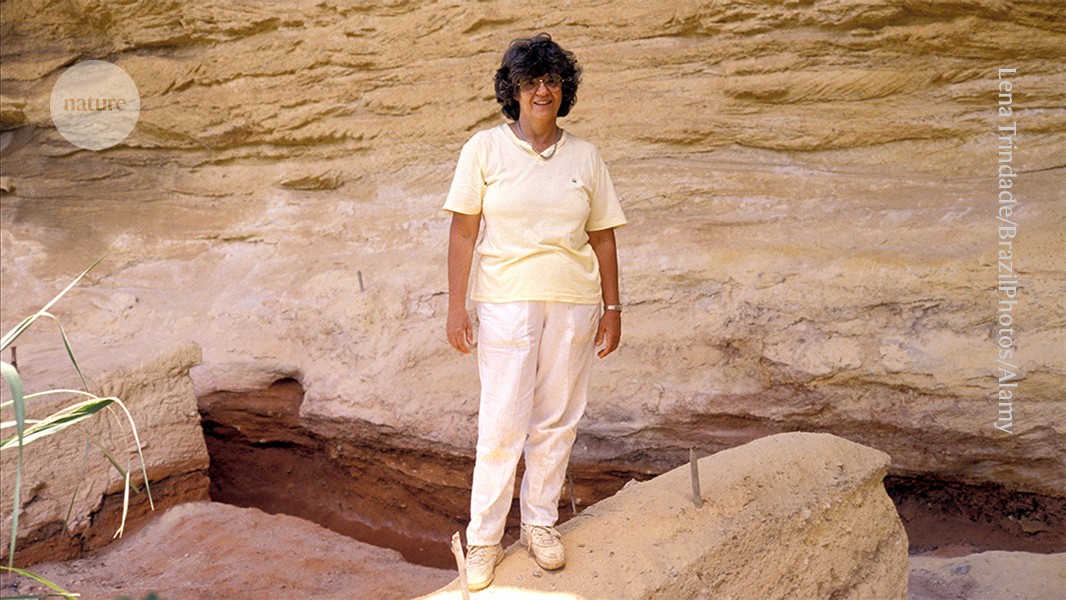Niède Guidon obituary: Brazilian archaeologist who upended ideas on early human migration

Researcher used carbon dating to provide evidence that humans had arrived in Brazil much earlier than previously thought

Credit: Lena Trindade/BrazilPhotos/Alamy
Niède Guidon, a Brazilian archaeologist, was one of the first researchers to challenge a long-standing consensus on when and how early humans arrived in the Americas. The Clovis-first theory — popularized by US archaeologists in the mid-twentieth century — posited that people first migrated from Asia to the Americas across the Bering Strait about 11,500 years ago. They then moved southwards, colonizing first North America and then South America. But Guidon, who studied cave paintings, hearths and worked stones in the state of Piauí in northeastern Brazil, found evidence that the region might have been occupied more than 30,000 years ago. Her conclusions caused uproar in the scientific community. Guidon has died aged 92.
Born in the city of Jaú in São Paulo state, Guidon had a French grandfather who taught her his language when she was a child. In 1961, after receiving her diploma in natural history at the University of São Paulo, she went to the Paris Panthéon-Sorbonne University to study prehistoric archaeology. Returning to Brazil, she worked at the Paulista Museum in São Paulo, where she first learnt about the ancient rock paintings in Piauí.
Despite having no political affiliations, Guidon was anonymously denounced as a communist under the Brazilian military dictatorship that began in 1964. She went back to Paris and lived there until 1986. There, she became a researcher at the French National Centre for Scientific Research (CNRS) and obtained her PhD at the Sorbonne in 1975. In 1970, she made her first trip to Piauí. She was so impressed with the ancient art that, in 1973, she organized a Franco-Brazilian expedition to the region. The team found 55 archaeological sites, including some scattered with flaked and polished pebbles that she attributed to human action.
“We thought, then, that these sites were recent,” she wrote in a 2003 account for ComCiência magazine, “because, like all American archaeologists, we believed that the Americas had been populated late.” But what Guidon and her team found in a collection of rock shelters called the Toca do Boqueirão da Pedra Furada suggested otherwise. Over decades, the researchers carbon-dated hearths at several stratigraphic levels, finding that some were more than 50,000 years old. Her 1986 Nature paper, written with Georgette Délibrias, one of France’s leading radiocarbon researchers at the time, presented charcoal dated to 32,000 years before the present — more than twice the age of any other known human settlement in the Americas (N. Guidon and G. Delibrias Nature 321, 769–771; 1986).
Guidon’s work was met with scepticism in the United States, and heated debates ran for decades. Her critics argued that the dated hearth remains resulted from natural fires and that the flaked pebbles had been formed naturally in rockfalls. Still, Guidon’s relentlessness eventually convinced even some of her detractors to take her evidence seriously. In 2013, Walter Neves, a bioanthropologist at the University of São Paulo, told Pesquisa Fapesp magazine that he had analysed the Pedra Furada pebbles at Guidon’s invitation. He was “99% convinced that the artefacts were in fact produced by men”.
Gradually, a body of research corroborating Guidon’s theory began to take shape — including pre-Clovis findings elsewhere in the Americas and doubts that the route across the Bering Strait was ice-free during the time frame required in the Clovis-first hypothesis. Acceptance of the Clovis-first model has continued to decline, despite occasional findings that seem to support it.
Login or create a free account to read this content
Gain free access to this article, as well as selected content from this journal and more on nature.com
or
Sign in or create an accountNature 643, 30 (2025)
doi: https://doi.org/10.1038/d41586-025-02029-4
This story originally appeared on: Nature - Author:Meghie Rodrigues


















